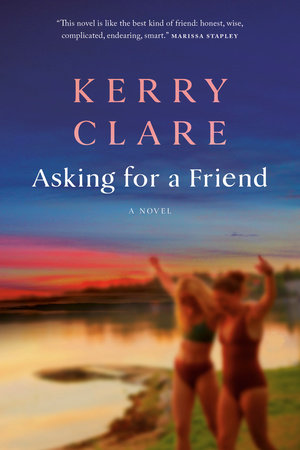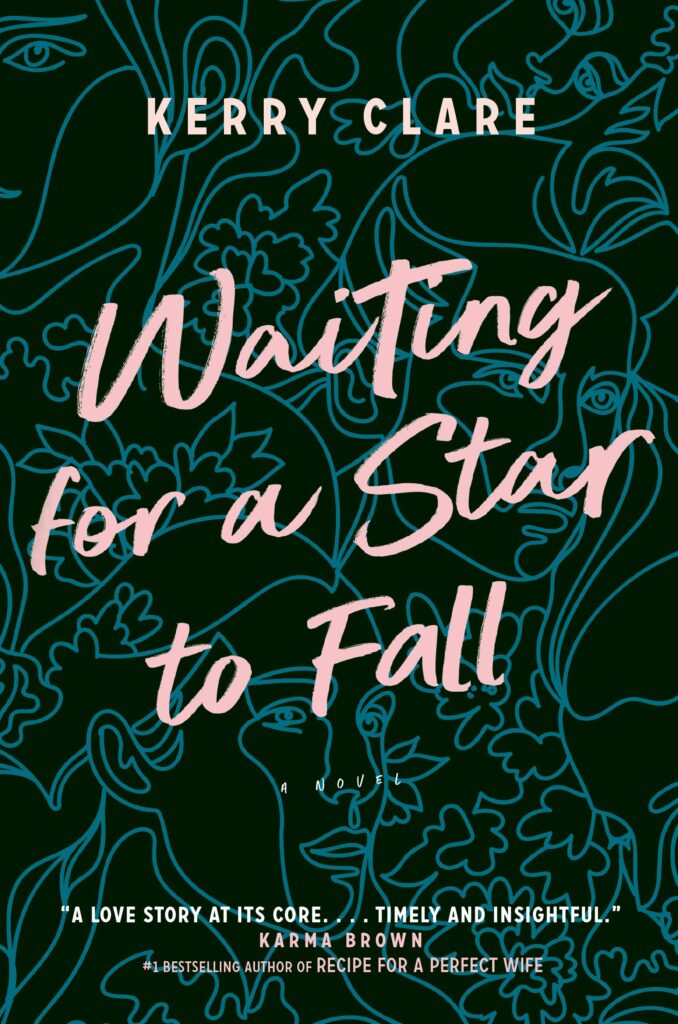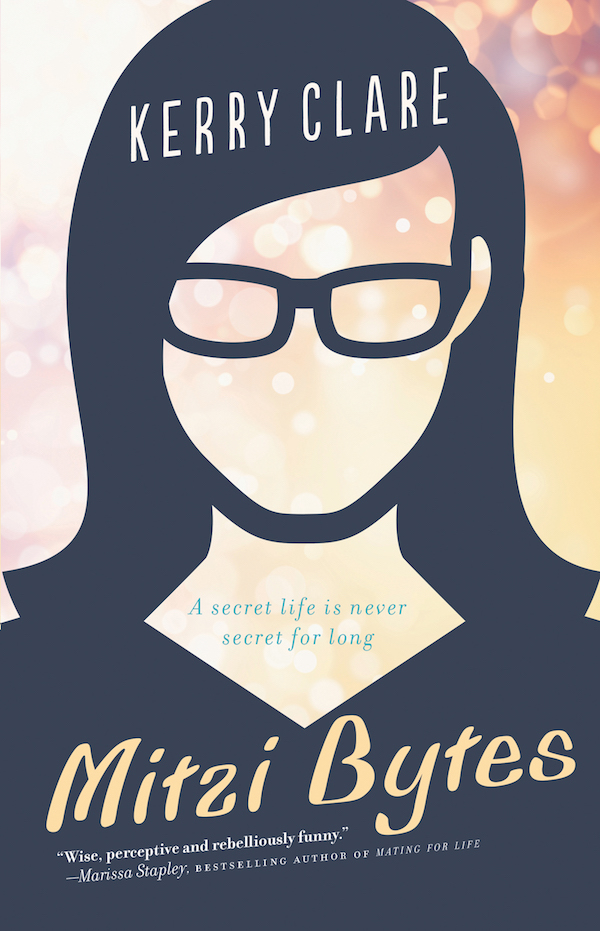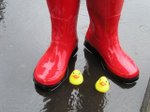December 6, 2013
My Top 10 Books of 2013 has 22 books in it.
It’s been an amazing year for books. And this is the first time I’ve felt like this for a long time. This year, I’ve read books that broke my heart, books that changed my world, books that articulated everything I wonder about, books that changed my mind. This was a year of highs and lows, a year in which I needed certain books more than ever, and these in particular are the books that spoke to me so clearly. It was such an amazing year for books, in fact, that my Top 10 Books of 2013 has 22 books in it. The abundance is the very point, and I have no desire to narrow it down.
 Americanah by Chimamanda Ngozi Adichie:
Americanah by Chimamanda Ngozi Adichie:
I love a book so textured that the answer to my criticisms are contained inside its very pages. I reached page 335 to find a tirade by Ifemelu’s boyfriend’s sister who is about to publish her first book, a memoir about growing up black in America. She explains, “My editor reads the manuscript and says, “I understand that race is important but we have to make sure the book transcends race…” And I’m thinking, But why do I have to transcend race? You know, like race is a brew best served mild, tempered with other liquids, otherwise white folk can’t swallow it.” Explaining an anecdote, she says, “So I put it in the book and my editor wants to change it because he says it’s not subtle. Like life is always fucking subtle.”
 Life After Life by Kate Atkinson:
Life After Life by Kate Atkinson:
There is texture to a book like this, and the pleasure of seeing secondary characters from a wide variety of angles–Ursula’s mother in particular whose role in the novel’s conclusion was ingenious. Life After Life is a long book, as befitting a life lived over and over again, and I savoured its slowness, the returns to where I’d been before, places and people I was happy to revisit. I appreciated the specificity of its detail, the brilliance of its writing, its genre-blurring, its daringness in reframing the shape of a narrative, and yes, this is Kate Atkinson, so there is going to be that too.
Bush’s novels are always planted much more in concept than narrative and plot, and they are markedly unusual for this. They are also remarkable for their realism, details that plant the stories deep in the ground, on very specific sidewalks and streets, so that a book about a mother orbiting the Earth in Outer Space seems not so far from one’s own experience at all (as in her first novel Minus Time), and so too with this this novel about a journalist driven to explore a(n alleged) crime committed an ocean away amidst a community of street children turned circus acrobats. And this is just one way that this novel turns in on itself as we read it, for it is a story about how we project our own experiences upon those of others (and indeed, as Madeleine Thien read the novel through the lens of race, which never even occurred to me).
What I love best about this novel is that nobody ever changes. There is no great revelation. Claudia’s brother is still the jerk he was when the novel began, there is no fix for her father’s heartache, and even Claudia begins to see that her ex is moving away into a life of his own. But all the same, it’s okay, or it’s going to be. This is not aHow the Failed Housewife Learned to Get Along With the Vacuum kind of tale, but instead it’s about how Claudia learns to draw on her reserves, that herself exactly as she is has the capacity to roll with the punches better than anyone else. When life is messy, bumpy and hard, it’s because that’s what life is, and not because you’re doing it wrong
 The House on Sugarbush Road by Meira Cook:
The House on Sugarbush Road by Meira Cook:
There is no expressway into the Johannesburg of Méira Cook’s novel The House on Sugarbush Road. Instead, the roads are twisting and clogged with traffic, detritus, pedestrians on the roadside calling out in a language you don’t understand. This is a novel that is disorienting to encounter, hard to get one’s bearings in; the reader travels blindly along these foreign streets, trusting in the story and its teller. And as the story progresses, the trust builds. While The House on Sugarbush Road is Méira Cook’s first novel, she is widely published (and lauded) as a poet, she worked as a journalist in her native South Africa, and her prose gorgeously reflects the former while her novel’s approach shows the latter. The effect is brutal, surprising, and provokes an incredibly visceral reaction.
The key to this book, I think, and its usefulness for us, lies in a particular word that occurs at least twice. First, when she returns to her family’s London home and comes upon their back garden in early morning, the sight of a snail making its way across the patio table: “They would be so stirred by this.” Later, she writes about her husband who’d grown up on a council estate in East London, and his first trip to the Natural History Museum when he was six years old. At the sight of a life-sized model of a blue whale: “this was the most stirred he’d ever been.”
To be stirred then, to have our quiet disturbed. Perhaps this is why we should read this, or any book. A gentler version of Kafka’s frozen sea, and I like that. Not fortifying, but instead (and not merely) our reason for being.
 The Pure Gold Baby by Margaret Drabble:
The Pure Gold Baby by Margaret Drabble:
It’s such a strange novel: we are taken through the decades of a group of mothers in London and learn which marriages ended, which children succeeded, which others went wayward (and how there was no telling of who would be who). This is a novel about friendship, and how we tell each other stories, about how we become characters in the stories of one another’s lives. It’s about mental health, public health, institutions. It’s a novel full of facts, pages of passages that read like non-fiction. It’s about progress, and the illusion of progress.
Pure Gold Drabble, is what it is. And so naturally, I loved it.
Jennica Harper is the poet whose books I stay up reading late into the night. She has uncanny ability to zero in on my fascinations, articulate questions I’ve vaguely wondered about, to use the very things located in the world around me (songs, cultural lore, television characters, celebrity references) and spin their own mythology. In a recent conversation, she asked, “Is there such thing as a “gateway poet”? That’s what I’d like to be.” And she has certainly succeeded at this, most recently with her latest collection, the beautiful, quietly powerful Wood.
 Oh My Darling by Shaena Lambert:
Oh My Darling by Shaena Lambert:
And I love that, that here is a collection where I can tell you about the book, its themes, its shape, rather than just telling you the plots of three or four of the stories I liked best.Oh, My Darling doesn’t actually reference Clementine, which wikipedia has revealed to me is actually a satire (because who would write a song about a drowned girl whose feet were so big she had to wear boxes instead of shoes?) But its preoccupations are just as morbid, and so darkly humorously so at times that I am sure that Lambert knew about the satire. That tireless refrain, powered by blustery, lust-ery, souls laid bare. So much feeling for something seemingly shallow. Sound going nowhere. Just imagine how it would echo in a cavern, in a canyon, excavating for a mile…
 Cottonopolis by Rachel Lebowitz:
Cottonopolis by Rachel Lebowitz:
But most remarkably for this book that uses language to build a museum is that the language itself is easily and unabashedly the work’s most remarkable aspect. I love the stories here, the history, but I can’t help but catch my mind on a line like “The trill of the/ robin, the trickle of the rill.” Or my favourite poem in the collection, “Exhibit 33: Muslin Dress” which turns language inside out in order to sew the whole world up into a tidy purse: “Here are the railway lines and there are the shipping/ lines. Here’s the factory line. The line of children in the/ mines. The chimney lines. There is the line: from the/ cotton gin to the Indian.”
Rebecca Lee’s short stories share the same approach as Sarah Selecky’s, the same intimate first-person narration, close attention to detail that sets these characters as very much of this world (lines like “Lizbet basically knew how to live a happy life, and this was revealed in her trifle–she put in what she loved and left out what she didn’t”)–as well as dinner-party settings and fork on the cover. But on the other side, Lee’s marvelous telescoping endings and ultimate broadness of perspective remind me of the stories in Jhumpa Lahiri’s The Interpreter of Maladies. (I think “Bobcat” may join Lahiri’s “The Fifth and Final Continent” as one of my favourite short stories ever.) These stories were written over two decades and accordingly the collection lacks a certain cohesion, except for (and this is significant) the solidity of Lee’s voice.
 The Love Monster by Missy Marston:
The Love Monster by Missy Marston:
We come along with Margaret on her trip to rock-bottom, though the omniscient narrator also embraces Margaret’s mother, her co-workers, even the evil ex, the alien, and invests them with a powerful sympathy, an investigation of the kernel of sadness which lives within us all. The lines, the straight-talk, the music that Margaret plugs into her ears, the disasters–this Canadian book is hilarious, and will never, ever win the Leacock Prize (which is some kind of endorsement). It’s funny, and quirky, but not cute, and it’s terribly profound. Really amazing writing.
 The Woman Upstairs by Claire Messud:
The Woman Upstairs by Claire Messud:
Messud’s novel is also structured as a fun-house, trap-doors and booby-traps springing up if the reader makes the mistake of taking Nora at her word. Which is a difficult mistake to avoid–Nora’s voice is so forceful, persuasive, she perpetually speaks in generalizations and second-person address designed to make us feel comfortable, familiar. “Don’t all women feel the same?” she asks, and you’d be hard-pressed not to respond with a nod, but then, no! There is no such thing as “all women” anyway, and besides, Nora Eldridge is clearly unhinged. On top of being an unreliable trickster of a narrator, she is also blatantly wrong, about so many things, but most notably in her insistence on regarding the world within the limits of gendered binary terms. In this way, the novel recalls Carol Shields’ Unless, another book in which an enraged female narrator stamps her ladylike foot at the systematic repression of womankind, institutionalized sexism which completely exists, but her singular focus upon this obscures a far more complicated reality. Which is not to say that Nora Eldrige’s or Reta Winter’s rage is misplaced, that either should cease their foot-stamping, but just that there is ever and will be ever more to the story.
 Are You Ready to be Lucky? by Rosemary Nixon:
Are You Ready to be Lucky? by Rosemary Nixon:
So let’s break the silence then, shall we? Rosemary Nixon’s collection of linked short stories is one of the funniest, most original books I’ve read this year. I started reading it on Friday, found it hard to put down, and had devoured it by Sunday afternoon. Are you ready to be lucky, indeed.
 This is the Story of a Happy Marriage by Ann Patchett:
This is the Story of a Happy Marriage by Ann Patchett:
But Patchett does channel Didion in Fact Vs. Fiction when she writes, “We all turn our lives into stories. It is a defining characteristic of our species.” And this is the triumph of her book, how it turns the self-help trope inside out. Ann Patchett doesn’t have the answers, but what she has instead are stories and – like life itself – these can be more complicated and unfathomable than we’d ever believe of fiction.
 How the Light Gets In by Louise Penny:
How the Light Gets In by Louise Penny:
What is the attraction of Louise Penny’s novels, my reservations with her prose still being what they are? I think part of it is the intimacy she creates, between reader and place in her remarkably evoked village of Three Pines. And also the intimacy between the characters themselves, so much between them that doesn’t need to be explained, allowing the novels to progress in ways that are surprising. And finally, the intimacy of her narrative, her shifting points of view which enable us to understand her world from a wide range of perspectives. Which is not to say that her readers know everything. In fact, in this book in particular, the plot is operating on a whole other plane that readers are not even aware of until an incredible twist at the conclusion, and I promise that you never see it coming.
 The Children of Air India by Renee Sarojini Saklikar:
The Children of Air India by Renee Sarojini Saklikar:
This poetry collection is beautiful, devastating, difficult and important. Difficult in terms of subject matter, but yet the narrative was so compelling, N herself leading the reader through so many lives and stories, plot and intrigue. Throughout, I needed to take short pauses because it all was a little too much, but then I’d pick the book right up again, the poetry accessible and fascinating, rich with history and voices.
 Where’d You Go, Bernadette? by Maria Semple:
Where’d You Go, Bernadette? by Maria Semple:
Apparently Maria Semple’s novel Where’d You Go, Bernadette? was one of the biggest books of last year, but perhaps I wasn’t paying attention. Someone who was paying attention, however, was Stuart, who took note when I picked this book up in the store and casually remarked, “I’m kind of interested in this one,” and proceeded to buy me the book for Mother’s Day. I saved it for postpartum, because I had a feeling, and oh, what a good feeling it was. Two nights ago, Iris’s all night eating/fussy fits began, and I was so glad to have this book on hand. My mind is fuzzy and there is no way I could write a coherent review, but it’s an endorsement, I think, that on Saturday night when I was up from 12am until 5am feeding the baby, all I could really think of was, “Yes! I get to read more Bernadette!”
 The Faraway Nearby by Rebecca Solnit:
The Faraway Nearby by Rebecca Solnit:
And so it’s like this, a fantastic journey through a terrain with someone who sees deeper into the world than you’ve ever begun to imagined. Solnit is author of a book with the title A Field Guide to Getting Lost, and she makes digression into an art here, though it always winds back around eventually, the narrative accumulating. Winding, threading, Rapunzel and Penelope, spinning and spinsters. She makes connections between virtual threads and literal threads and fabric, and it all comes down to stories. It always does. “Moths drink the tears of sleeping birds.” What shape should a book be in a world where that is a fact?
For nearly two weeks, I was reading The Goldfinch, carting it everywhere I went, having to pull out a bigger purse in order to accommodate its heft at 771 pages, my hand cramping as I read it while breastfeeding. I ripped the dust jacket when I tried to tear off a sticker, and then took the dust jacket off altogether when it started getting tatty from the travel. After that, I put the book down on the table on something green, and then the cover started to disintegrate when I wiped the stain off with a damp cloth. I don’t usually treat my books so poorly, butThe Goldfinch is so large and solid, a piece of furniture nearly. It has presence, is lived with, is experienced. And it is interesting to think about my wear-and-tear on the book when I consider how much of the book is about what time does to physical objects. The Goldfinch is about its thingness just as much as it is about its text.
 Projection: Encounters With My Runaway Mother by Priscila Uppal:
Projection: Encounters With My Runaway Mother by Priscila Uppal:
It has become standard to refer to memoirists as “brave”, but I can’t help doing the same for Uppal, with the caveat that “brave” means something totally different here, something substantial. First, Uppal’s bravery in staring down this woman, her mother, who is clearly unhinged and exists in the alternate reality her love of movies provides. Uppal dares to confront her, but also dares to understand her, however unforgivingly. She is also brave to not forgive, or to have her story not adhere to standard narratives, to have a happy ending. She refuses to compromise, but also manages to see her story from all points of view. She is brave to take a story with so much pain and turn it into art that’s so extraordinary.
 The Interestings by Meg Wolitzer:
The Interestings by Meg Wolitzer:
The structure of The Interestings is fascinating, the novel weaving back and forth through time without great shifts, effortless for the reader to follow and seemingly effortless for the writer too, though I can’t imagine that this was really the case. And yes, it is so interesting, a book so terrific to be absorbed in and whose end (at page 468) arrives too soon.












Roost is on my best of list this year too.
Strangely, most of my favourite books this year had domestic themes.
Two on your list are on mine too: Wolitzer and Adichie. I haven’t read a lot on your list, although there are many I want to read, especially Wave and The Pure Gold Baby. There are three I read and liked to varying degrees but not enough to be in my top ten or top twenty-two, including The Goldfinch and The Woman Upstairs. 2012 was far easier because Lightning Rods was the single standout, but I have a long list this year too.
Great list. I didn’t know all of them and that’s a good thing. it gets tiresome seeing the same books on everyone’s list.
Really great list. Wave was up there for me as well. I am about to hoist The Goldfinch and am wondering about some kind of crane-like device?
Interesting list — loved The Interestings (loved!) and Bobcat, and great to see Rosemary Nixon’s marvellous and tragically overlooked Are YOu Ready to Be Lucky? here.
You’ve put The Pure Gold Baby, and the Bernadette book on my wish list — so thanks.
I did find it interesting and curious that all 22 books are by woman. My books of the year are probably about half and half or, more accurately, at least 65% male authors.
Great list! I am so glad to see Rosemary Nixon and Ali Bryan’s work on it!
Good to see Rosemary Nixon and Catherine Bush on this list. Both are wonderful writers. I guiltily read Are You Ready to Be Lucky when I knew I should be working — but I couldn’t put the book down!
So many great books! I also loved Life After Life, in particular — haven’t read many of your picks so it’s nice to see extra recommendations for them 🙂
An excellent list! So many great books here!
We have a fair bit of overlap! And now I’m extra-excited about the Drabble waiting for me at home 🙂